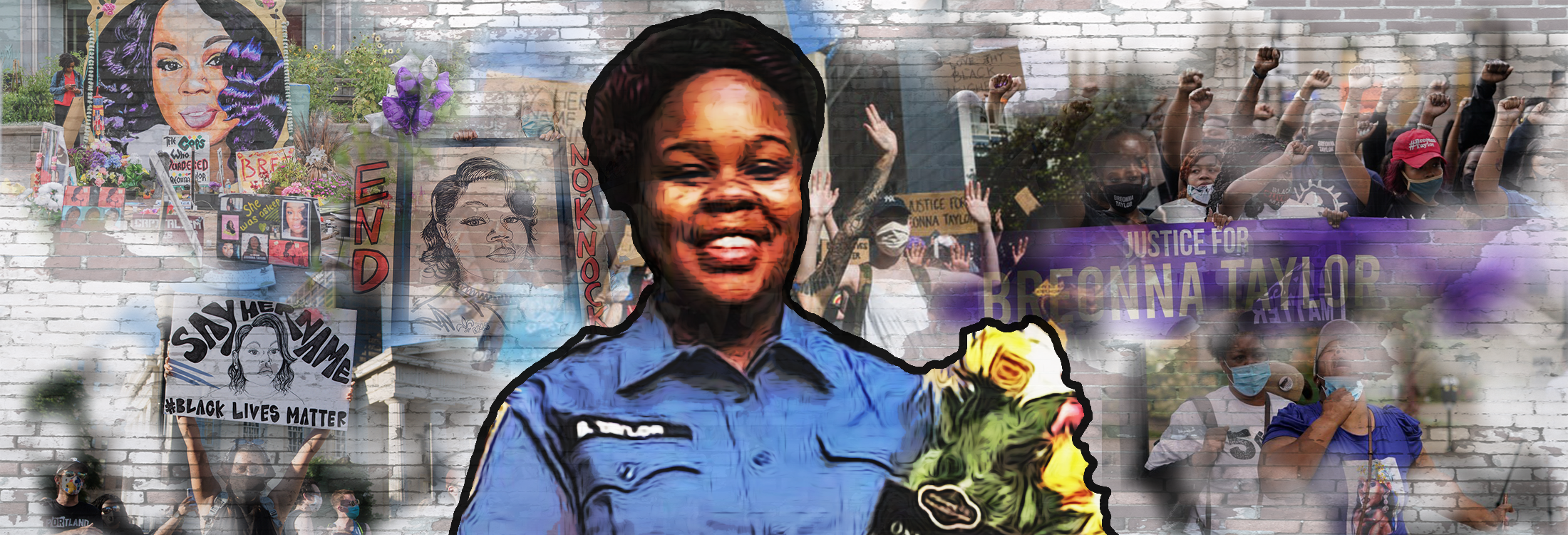
Breonna Taylor (1993-2020)
Public outrage was fueled by the death of Breonna Taylor, a young, black, professional woman killed in her own home. Her case quickly became part of the African American Policy Forum’s social media hashtag, #SayHerName, which calls attention to less visible and often underreported killings of women of color by police.
People frame these incidents according to their vantage points and perspectives. Law enforcement sees this through the lens of justifiable use of force relative to the execution of a warrant and the need to preserve officer safety. Communities of color tend to see such incidents through the lens of the long history of police too easily turning to lethal force when engaging people of color. In particular, no-knock warrants have resulted in a number of high-profile incidents of innocent people being injured or killed, such as Amir Locke in Minnesota (2022), Ayanna Jones in Detroit (2011), and Dennis Tuttle and Rhogena Nicholas in Texas (2019).
Professional sports athletes wore her name on their helmets and shoes and public figures such as Oprah Winfrey, John Legend, Beyonce and LeBron James called for the arrest of the officers involved in the shooting. In addition, presidential candidate Joe Biden spoke about Taylor’s tragic death and called for the officers to be charged.
Questions were raised in this case about the amount of evidence provided to a judge to authorize the No-Knock warrant at the center of the case. Concerns were also raised about the lack of body-cam footage of the incident. Many were struck by the fact that Taylor was killed in her home, seemingly without the right to defend her person and property from intrusion, or to be protected by her partner.
By no means extensive, here are a few examples of how this tragedy was framed by law enforcement, public officials, and the larger community. In your homes, communities, workplaces, and houses of worship, we invite you to consider how and why fear is so often at the center of interactions between law enforcement and communities of color. What additional perspectives would add clarity to our understanding of this case? What additional frames are useful for thinking about change that will prevent these kinds of incidents in the future?
Digging Deeper
Kentucky attorney general announces grand jury's charges in Breonna Taylor case - September 20, 2020 press conference by AG Daniel Cameron announcing grand jury’s indictment
What to Know About Breonna Taylor’s Death - Comprehensive review of the case by The New York Times
Officer involved in Breonna Taylor shooting speaks out - Good Morning America interview of Sgt. Johnathan Mattingly
Breonna Taylor’s boyfriend responds to officer who spoke out - Good Morning America interview of Kenneth Walker
911 call from Kenneth Walker - Audio recording of 911 call by Kenneth Walker the night Breonna Taylor died
Family & Community Voices
Conversation Starters
Where do you potentially see fear being evidenced on both sides? At what junctures do you see the fear structuring or impacting the encounter?
What could have been done differently to minimize this tragic encounter?
How did the problematic use of a no-knock warrant contribute to this tragedy? What policy reforms could be explored and/or implemented to safeguard both the lives of police and the public?
